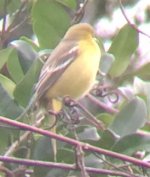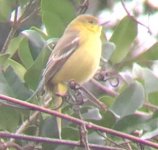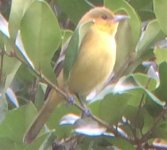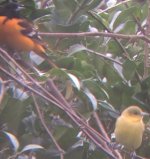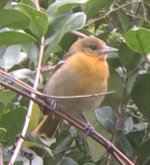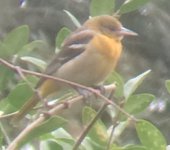Hallawhosit
Member
Hi there! We’ve attracted a flock of 8 or so Baltimore Orioles this winter, but there is one that looks different from all the rest. She’s (?) more yellow than all the rest and the wing bars aren’t as prominent. I’ve tried looking at her beak but honestly can’t determine whether it’s more curved down than the others. Sometimes I think so but sometimes I don’t. I think I psyche myself out. She seems more timid. I haven’t seen her on the feeder, only in the bush where they stage. I’m inclined to believe she’s just a lighter color variation since all the rest are very obviously Baltimore Orioles. But I thought I would get a more experienced opinion. My “photography equipment” is just a cell phone and a pair of binoculars, so I apologize if these are too blurry to be helpful. If I’m able to get anything better, I’ll add it. These pictures were taken, February 17, 2020, around 12:45 PM. Thanks!
-Hallawhosit
-Hallawhosit




